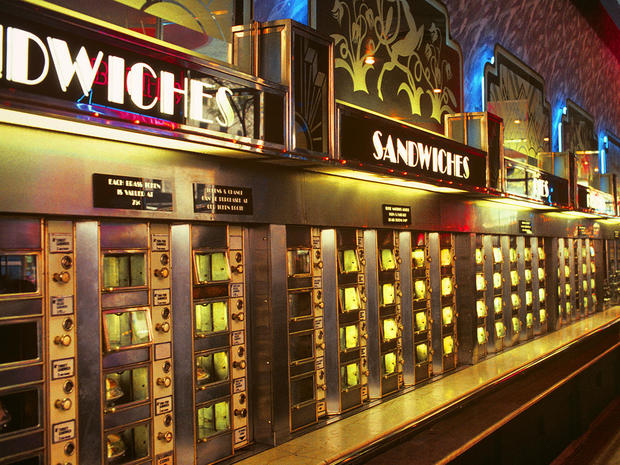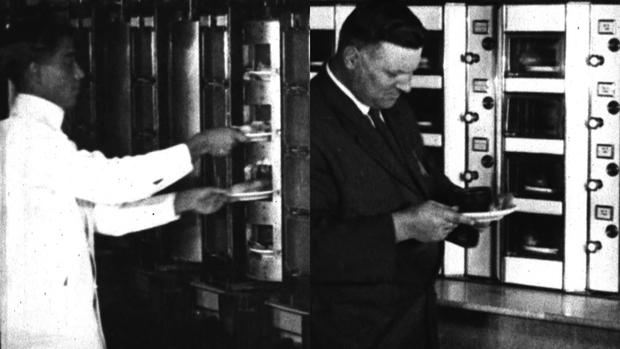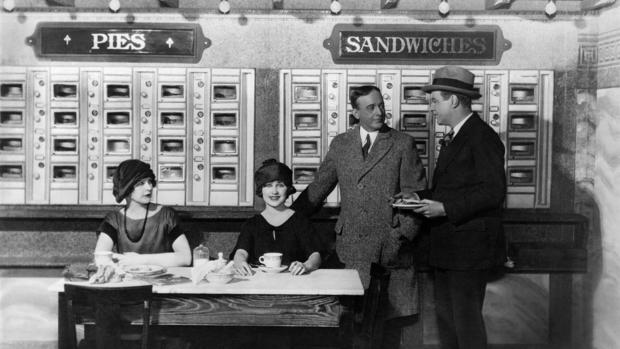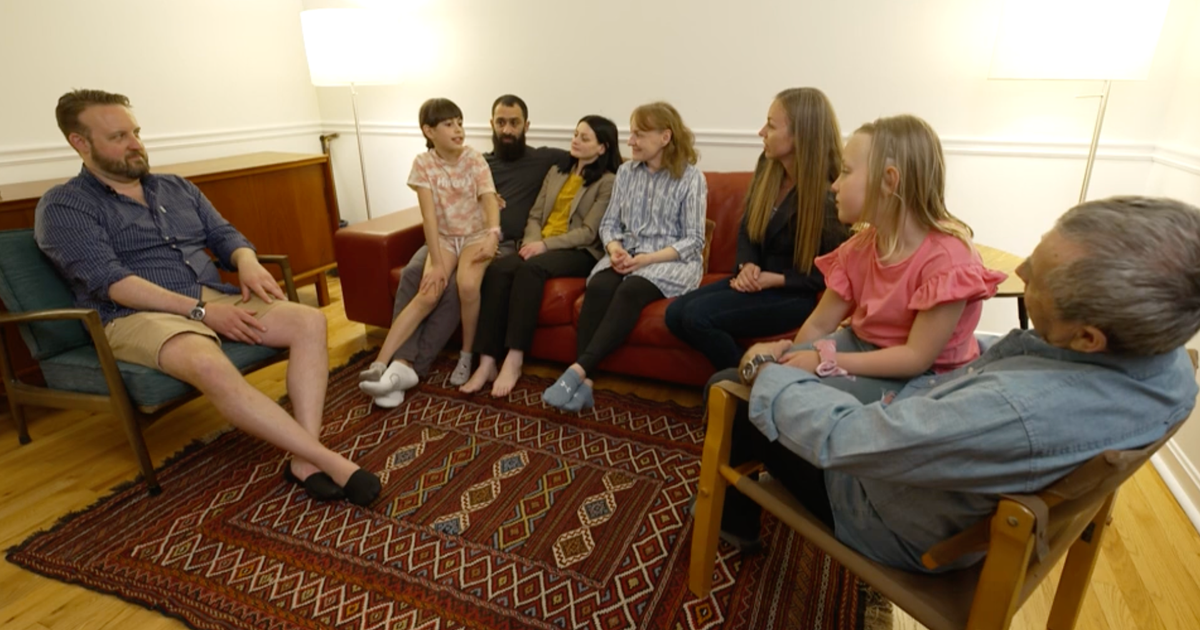The Automat: A look back at the future of dining
It seemed like magic: A restaurant without waiters. Instead, walls of shiny glass and chrome doors, which opened to reveal comfort foods to match Mom's cooking.
"Pies, pies, pies. Yes, the pies were fabulous!' said Broadway legend Chita Rivera.
Correspondent Mo Rocca asked, "Had you ever seen anything like this?"
"No, ever. But I just remember it sparkling so."
The Automat was for its time a marvel of modern technology, the deliciousness delivered via rotating drums, constantly replenished by barely, if ever, glimpsed employees.
Even the name "Automat" sounds futuristic. "It sounds very Jetsons, doesn't it?" said Lisa Hurwitz, the director of the new documentary, "The Automat."
Hurwitz did much of her research at the New York Public Library, which houses an extensive collection of Automat memorabilia.
Rocca asked, "Paging through these, what was it like for you?"
"I remember this feeling of excitement, holding something that nobody had touched or seen for many, many decades," she replied.
The documentary serves up history with a heaping side of nostalgia, with luminaries like Secretary of State Gen. Colin Powell ("I really got excited about a Salisbury steak"), Supreme Court Justice Ruth Bader Ginsburg ("The food was delicious, the prices were right"), and comedy great Mel Brooks ("Don't tell my mother this, I liked the Ham and Cheese sandwich"), all rhapsodizing.
Inspired by the Automats of Germany, Joseph Horn and Frank Hardart opened their first Automat in Philadelphia in 1902, soon expanding to New York. At their peak, there were nearly 200 locations serving 800,000 people a day.
Although Automats only operated in New York and Philly, they were immortalized by Hollywood, on Broadway, and in song by Irving Berlin.
The nickel was the coin of the realm here. Just one of them would buy what Horn & Hardart may have been most famous for: a steaming cup of coffee.
That coffee was so beloved, Mel Brooks even wrote a song about it for the film:
But the Automat was just as much about the place as the food. "Many people have referred to them as palaces or even palaces for the people," said Hurwitz. "It would not be unheard of for two completely different people, from different backgrounds, different walks of life, to be sharing a table."
Chita Rivera was just 17 when she arrived in New York to study dance. "The Automat was sort of our second home," she said.
Rocca said, "You make it sound so welcoming; you make it sound homey."
"It was. It took the place of my Mom and my family."
She and her fellow dancers didn't have a nickel to their names. "We would get a glass with lemon in it, fill it full of water, add sugar, and sit and have a free lemonade."
Hurwitz said, "You could stay there all day."
"And you didn't have to spend a lotta money?" Rocca said.
"No, you could make soup for free with the free hot water and the free ketchup."
No surprise the Automat thrived during the Great Depression, but after World War II, rising costs forced the company to make a fateful decision: doubling the price of their coveted coffee.
Hurwitz said, "People stopped going to Horn & Hardart, and sales dropped enormously."
Rocca said, "It's hard for people today to appreciate it, probably – 'Oh, 5¢ to 10¢, what's the big deal?' But people really did react."
"It was the talk of the town!"
Today Horn & Hardart is no more. The last location shuttered in 1991. But for those who lived it, the memories are as warm as a chicken pot pie.
Rivera said, "I loved the Automat. I really did. It was a wonderful part of my growing up. The Automat was a very special place, and it should be there today."
Recipes from the Automat - Classic dishes from Horn & Hardart's fabled self-service eateries
For more info:
- "The Automat" (Documentary), now screening
- Chita Rivera on Twitter
- New York Public Library Digital Collection: Automat photos
Story produced by Michelle Kessel. Editor: Jason Schmidt.
Check out the "Sunday Morning" 2021 Food Issue Recipe Index for more menu suggestions, from all of the chefs, cookbook authors, flood writers and restaurateurs featured on our program, as well as the writers and editors of New York Times Cooking.








